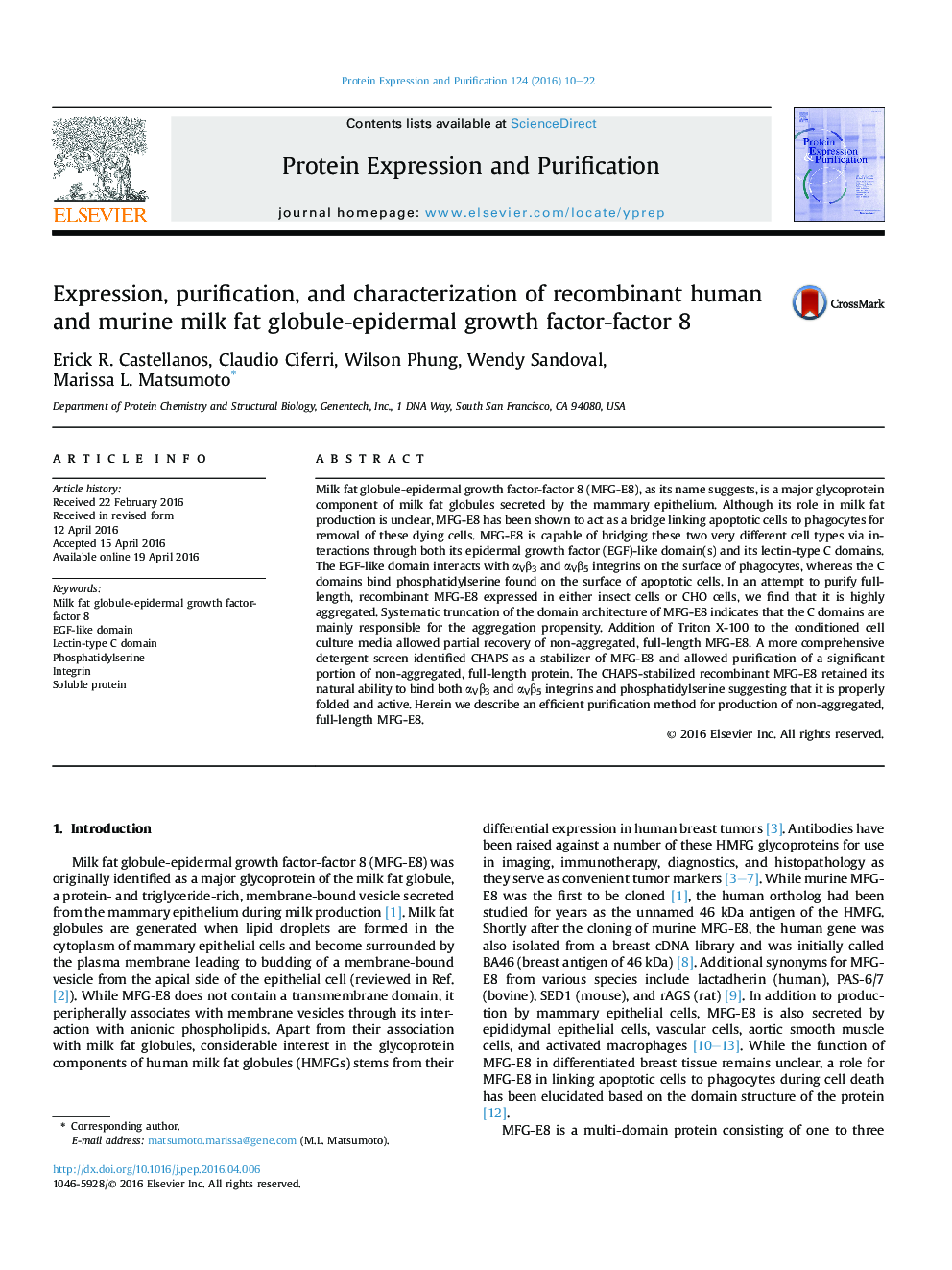| Article ID | Journal | Published Year | Pages | File Type |
|---|---|---|---|---|
| 2020166 | Protein Expression and Purification | 2016 | 13 Pages |
•Recombinant MFG-E8 is highly aggregated when expressed in CHO or Sf9 cells.•Deletion analysis indicates the C domains are responsible for the aggregation.•CHAPS detergent allows purification of non-aggregated MFG-E8.
Milk fat globule-epidermal growth factor-factor 8 (MFG-E8), as its name suggests, is a major glycoprotein component of milk fat globules secreted by the mammary epithelium. Although its role in milk fat production is unclear, MFG-E8 has been shown to act as a bridge linking apoptotic cells to phagocytes for removal of these dying cells. MFG-E8 is capable of bridging these two very different cell types via interactions through both its epidermal growth factor (EGF)-like domain(s) and its lectin-type C domains. The EGF-like domain interacts with αVβ3 and αVβ5 integrins on the surface of phagocytes, whereas the C domains bind phosphatidylserine found on the surface of apoptotic cells. In an attempt to purify full-length, recombinant MFG-E8 expressed in either insect cells or CHO cells, we find that it is highly aggregated. Systematic truncation of the domain architecture of MFG-E8 indicates that the C domains are mainly responsible for the aggregation propensity. Addition of Triton X-100 to the conditioned cell culture media allowed partial recovery of non-aggregated, full-length MFG-E8. A more comprehensive detergent screen identified CHAPS as a stabilizer of MFG-E8 and allowed purification of a significant portion of non-aggregated, full-length protein. The CHAPS-stabilized recombinant MFG-E8 retained its natural ability to bind both αVβ3 and αVβ5 integrins and phosphatidylserine suggesting that it is properly folded and active. Herein we describe an efficient purification method for production of non-aggregated, full-length MFG-E8.
